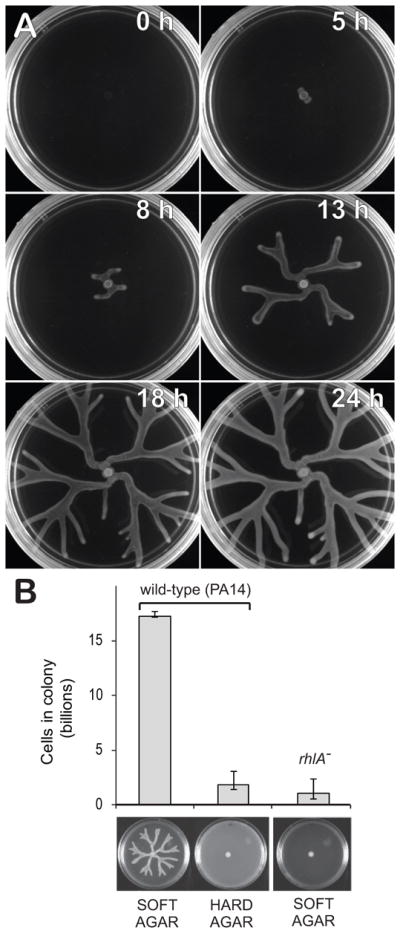Figure 1.

Swarming is a collective form of surface motility in Pseudomonas aeruginosa that benefits the colony but requires individual cells to synthesize and secrete rhamnolipid biosurfactants. (A) Frames from time-lapse imaging of swarming. See video SV1. (B) Swarming colonies achieve much higher cell numbers than colonies grown on hard agar (1.5 % agar, which prevents wild-type swarming, P<2×10−9) or colonies of mutants lacking the rhlA gene necessary for biosurfactant synthesis (P<2×10−9), showing that swarming benefits the colony.
